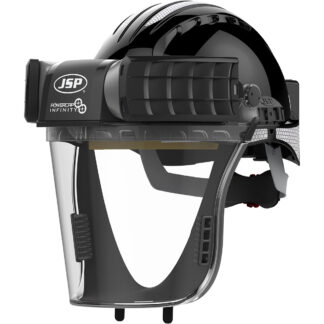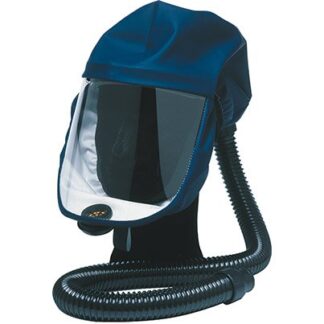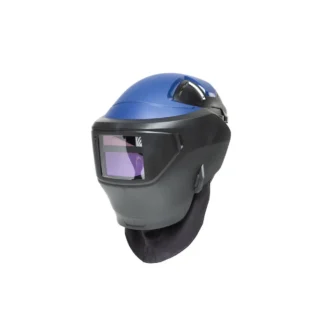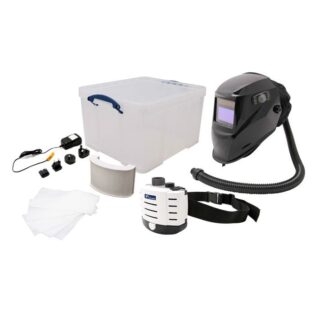Dust Masks are designed to protect the wearer against inhaling airborne particulates. Airborne particulates are solids or liquids suspended in breathable air and can be classified as dusts, mists or fume. Inhaling airborne particulates may have an inverse effect on health and, depending on the particulate inhaled, this effect may be irreversible. There are three main different type of dust masks which are governed by the European standard EN149:2001+A1:2009 (Respiratory protective devices. Filtering half masks to protect against particles. Requirements, testing, marking) – this covers FFP dusts masks and their three ratings; FFP1, FFP2 and FFP3. Each different dust mask rating is a step up giving greater protection.
The FFP rating stands for ‘filtering face piece’ and the numbers correspond to the level of protection that they provide, with 1 being the lowest and 3 being the highest. Below we have given an overview of what these protect against:
FFP1 Dust Masks
FFP1 dust masks give the minimum level of protection against non-toxic particulates however this may be perfectly acceptable depending on the airborne hazard. As they are composed of the least amount of filter material they also provide the least breathing resistance and quite often an exhalation valve is not required.
FFP1 dust mask protection examples: brick dust, cellulose, cement, coal dust, gypsum, limestone, Plaster of Paris, pollen, sugar.
FFP2 Dust Masks
FFP2 dust masks offer a moderate level of protection against hazardous mists and particulates and fume. Exhalation valves are more common in this rating of mask as there is greater breathing resistance. Some FFP2 dust masks have an activated charcoal layer to protect against ozone and these are often called welding dust masks.
FFP2 dust mask protection examples: brake dust, cotton dust, granite dust, hay, lead dust and fume, softwood dust.
FFP3 Dust Masks
FFP3 dust masks provide the highest level of protection that a disposable mask can offer. A well fitting FFP3 mask will protect against fine toxic particulates including asbestos, bacteria, viruses and radioactive particles. Due to the thickness of the filter material an exhalation valve is almost always fitted.
Protection class FFP3 masks offer the maximum protection of all 3 types of respirators, they protect against toxic solid and liquid materials and are often used in the chemical industry.
FFP3 dust mask protection examples: viruses, bacteria, radioactive dusts, asbestos.
Face Fit Testing
All respirators need to be face fit tested to make sure they are fitted correctly, even if the wearer wears more than one face mask. This is to ensure the wearer is protected at all times. They need to be sealed correctly around the face to prevent exposure to harmful fibres. These can be tested with a face fit testing kit.
Different Dust Masks FFP Protection Levels
| Protection level | WEL* | Micron Size | Filter penetration limit (at 95 L/min air flow | Inward Leakage | Hazard Type |
| FFP1 | >5 | Filters at least 80% of airborne particles | <22% | Non toxic dusts and water/oil based mists/aerosols. | |
| FFP2 | 10 | 2 – 5 | Filters at least 94% of airborne particles | <8% | Toxic dusts, metal fumes and water/oil based mists/aerosols. |
| FFP3 | 20 | Less than 2 | Filters at least 99% of airborne particles | <2% | Toxic and carcinogenic dusts, metal fumes and water/oil based mists/aerosols. |
*Workplace Exposure Limit
Nuisance Dust Masks
Comfort or Nuisance dust masks have no official FFP rating and should not be considered as full respiratory protective equipment. We hope the above guide to the different type of dust masks helps you to make the right choice when choosing your dust mask. This information is correct at the time of writing, but the legislation around respiratory protection is updated from time to time, to get advice about your specific requirements please call our team on 01842 765634 or email sales@dustmasksdirect.co.uk.
-

JSP Powercap Infinity Complete
£655.83 (VAT Exclusive) Add to basket -

Sundstrom SR 520 Respirator Hood with Breathing Tube
£86.87 inc VAT (Excl VAT: £72.39) Add to basket -

Sundstrom SR 574 Welding Shield
£1,083.70 inc VAT (Excl VAT: £903.08) Add to basket -

Centurion Concept Air – Welding Shield Kit
£694.28 inc VAT (Excl VAT: £578.57) Add to basket




